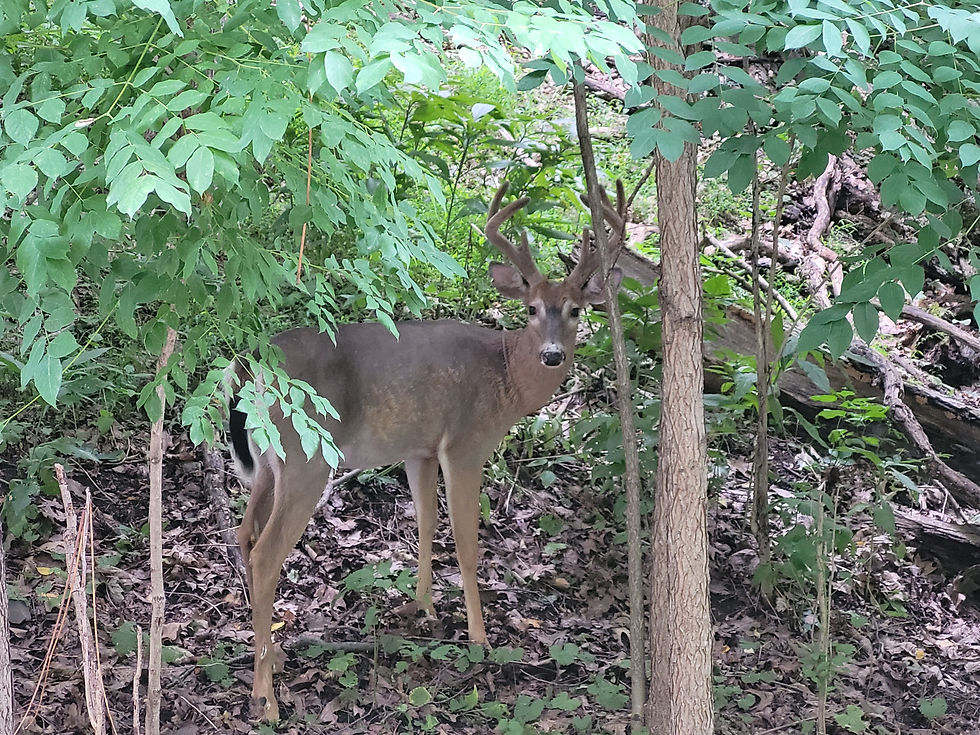Appalachians Lucy and Annette Braun, mothers of forest ecology | The Homepage
- jmartinez5135
- Feb 2, 2023
- 3 min read
By Matt Peters
In the 1930s and 40s, two young scientists named Lucy and Annette Braun traveled the roads of America, no easy feat in the years before Eisenhower built the U.S. interstate system. These sisters, Annette being the first woman to earn a doctorate from University of Cincinnati, in entomology; Lucy was the sixth, in geology. Together, they documented the forest types of the Appalachian Mountain region, the Cumberland plateau in Kentucky and the Tennessee plateau, as well as the Ohio River valley and the Pennsylvania ridge and range region north into the Adirondack Mountains.

The book Lucy authored with Annette’s help, “The Deciduous Forests of Eastern North America,” documents the forest types found in the most remote and inaccessible regions. With the timber industry at its peak, these were the last untouched places in those boom days of the unregulated industrial era. Their work remains the foundation of plant and forest ecology to this day.
Their book paints a picture of a forest that still had the last of the mighty American Chestnut. This species once supported vast flocks of passenger pigeons that darkened the sky, to name but one species that has disappeared from the eastern side of the continent. The steep hills and coves create a complexity and diversity of habitat. It has been home to an equally diverse community of thousands of herbaceous plant species, hundreds of tree species, and endless numbers of creatures great and small. Appalachia ranks among the highest of the world’s greatest diversity for salamanders, freshwater clams and fish, firefly species, canopy tree types, crayfish species (including one just listed for protection under the Endangered Species Act that is bright blue!), songbirds, and medicinal herbs.
Their book, based on 25 years of field research, identifies a unique area in the highest mountain regions, the mixed mesophytic forest. They call this the Mother Forest, for it is the source of all the other forest types found across eastern North America.
Oceans of water and layers of limestone are transient phases to this ancient forest, like seasons of summer and winter to you and me.
Just north of Pittsburgh is the glacial moraine, the extent of glaciation at the peak of the last Ice Age. Since those glaciers began retreating, the forests in the high mountains south of us in what is now West Virginia and western North Carolina have slowly been reclaiming the lands as the climate slowly warmed. This means that while the forests up in the Allegheny National Forest have a legacy of some tens of thousands of years (notwithstanding two and a half centuries of postcolonial industrial forestry), the forests from Ohiopyle south to the Great Smoky Mountains National Park have a legacy of continual forest cover that is as old as the coal in the rocks below, some 350 million years!
The diversity and mystery of that deep-time life surrounds us here in Hazelwood, a neighborhood surrounded by greenway forest. These forests are barely more than 50 years old, and in many places adapting to newly introduced invasive species in ways that clash with the urban aesthetic. To eyes untrained in the arts and sciences of ecology and botany, these young forests may look a bit scruffy and unkempt, and they are.
But rather than wipe away an entire generation (a human generation that is) of recovery and regrowth, the city’s Climate Action Plan has recognized that we need these forests for our national climate security. We need to think twice before we cut down trees to build anything. The neighborhood that we build as habitat for ourselves can include this source of abundance in our “green infrastructure” in ways that enhance the lives of the people who live here, in ways that industrial society has sought to destroy for its own ends.
By severing our basic human connection with nature, making us fear the forests and the weather and the very air we breathe, we have lost a part of ourselves, our souls if you will, and the landscape we shape reflects this. Let’s build a neighborhood that includes these green places and cultivates them into the forests that these hills remember. I can think of no better place to raise children than in a place where we can start to re-learn how our cities can live in better harmony with nature.
Matt Peters is a forest defense activist in Hazelwood.

.png)




Comments